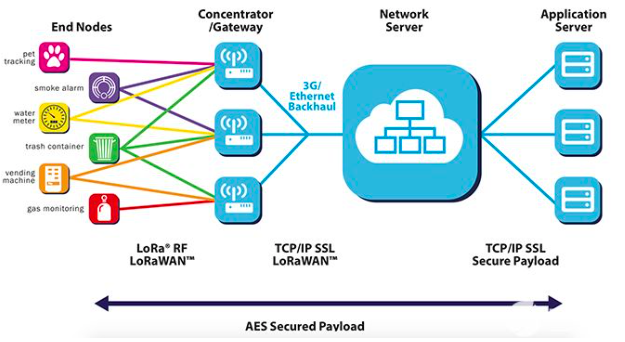Hotline:+86-13682652415

Author: Shenzhen Kingbird Network Technology Co., LtdIssuing time: 2020-03-28 20:18:05Views: 6714
Now in the era of the Internet of Things, with the rapid development of the Internet of Things, wireless communication technology has also been developed. Among the various connection technologies of the Internet of Things network layer, not only 5G technology with higher speed and stability, but also low power consumption , Long-distance, large-connected LPWAN (Low-Power Wide-Area Network) technology.
Among them, LoRaWAN stands out with its unique flexibility and is recognized by the Internet of Things. When it comes to LoRaWAN, you have to mention LoRa. LoRa is a subset of LoRaWan. It belongs to a modulation technology of the physical layer. The linear modulation spread spectrum method can significantly improve the receiving sensitivity and achieve farther than other modulation methods. Communication distance. As one of the mainstream technologies of LPWAN, LoRa is empowering the Internet of Things transformation in smart cities.

LoRa: low-power wide-area IoT technology that is easy to build and deploy
LoRa's name is Long Range Radio. As a linear frequency modulation spread spectrum modulation technology, it was first launched by Cycleo, a startup founded by several young people in France. Semtech acquired this company in 2012 and will This modulation technology is packaged into the chip, and a complete set of LoRa communication chip solutions have been developed based on LoRa technology, including different types of LoRa chips used in gateways and terminals, which opened the road to the commercialization of LoRa chips.
However, only a transceiver chip based on LoRa modulation technology is far from enough to leverage the broad Internet of Things market. In the subsequent development process, due to the LoRa alliance initiated by multiple manufacturers and the continuous iteration of the LoRaWAN specification, it has spawned a Wide area networking standard system supported by hundreds of manufacturers around the world, thus forming a broad industrial ecology.
The relevant technical standards, product design, application cases, etc. that promote this ecology are the processes that multiple manufacturers participate in. These are also the more critical elements that form the current huge industrial ecology, and they are not owned by a single Semtech company, such as LoRaWAN. The specification is an open standard with the participation of multiple manufacturers worldwide. Any organization or individual can carry out product development and network deployment according to this specification.
Compared with most networks that use mesh topology, it is easy to continuously expand the network scale, but the disadvantage is that various unrelated nodes are used to forward messages and routing is detoured, which increases system complexity and total power consumption. LoRa adopts star topology (TMD networking). Gateways are connected to end nodes in star form, but end nodes are not bound to unique gateways. On the contrary, the upstream data of end nodes can be sent to multiple gateways. In theory, users can achieve flexible networking through Mesh, point-to-point or star network protocols and architectures.

LoRa network architecture
LoRa mainly operates in free frequency bands around the world (that is, unlicensed frequency bands), including 433, 868, and 915MHz. The LoRa network architecture consists of four parts: terminal nodes, gateways, network servers and application servers, and application data can be transmitted in both directions.
LoRa is a physical layer or wireless modulation that creates a long-distance communication connection. Compared to traditional FSK technology and short-range RF technology with insufficient stability and security, LoRa is based on CSS modulation technology (Chirp Spread Spectrum) to maintain low power consumption. At the same time, the communication range has been greatly increased, and CSS technology has been widely adopted by military and space communications for decades, with the characteristics of long transmission distance and strong anti-interference.
In addition, LoRa technology does not require the construction of base stations, a single gateway can control more devices, and the network deployment method is more flexible, which can greatly reduce construction costs.



 +86-13682652415
+86-13682652415